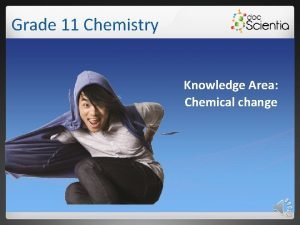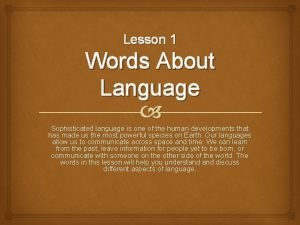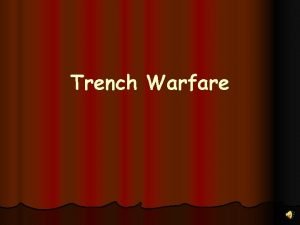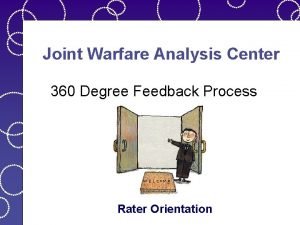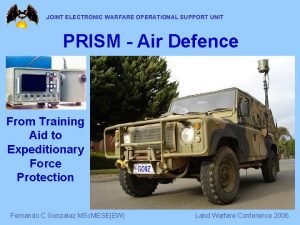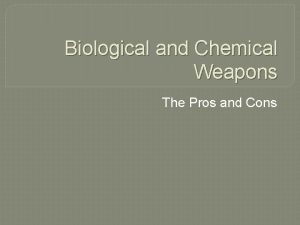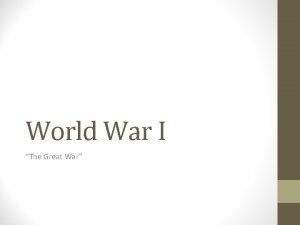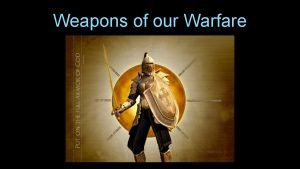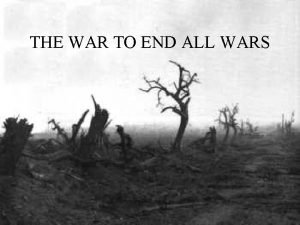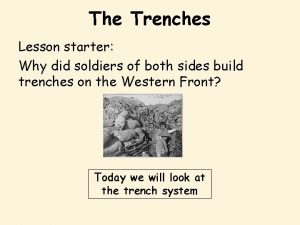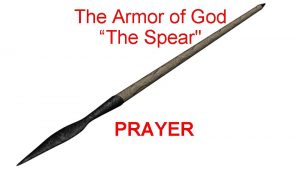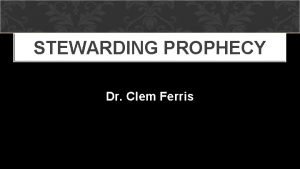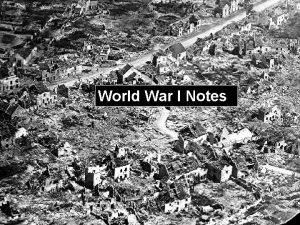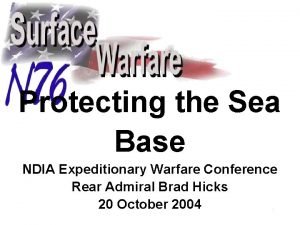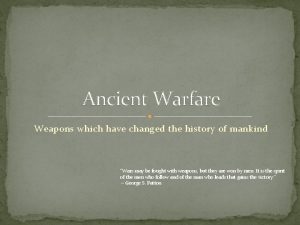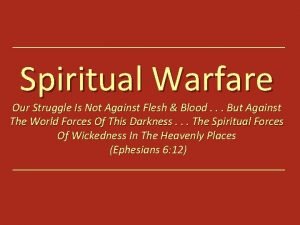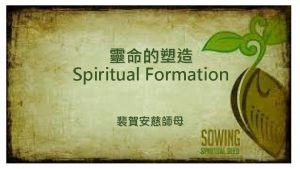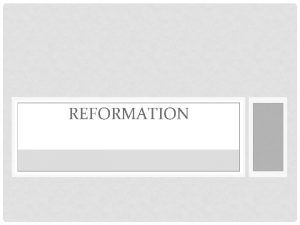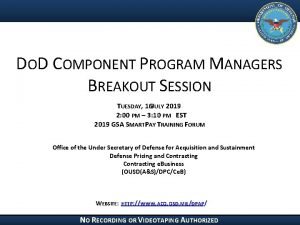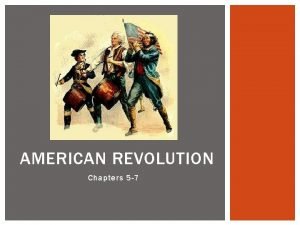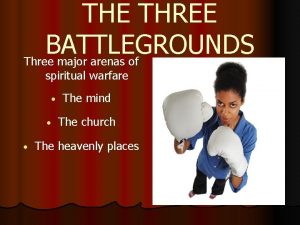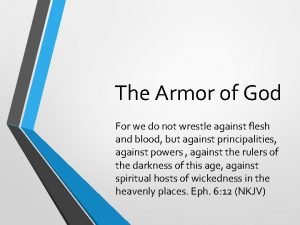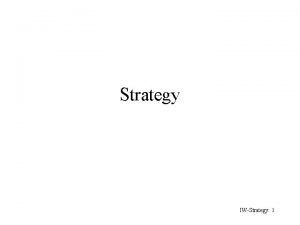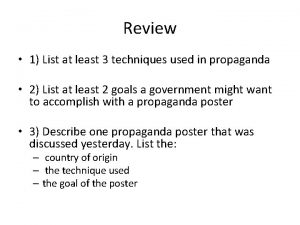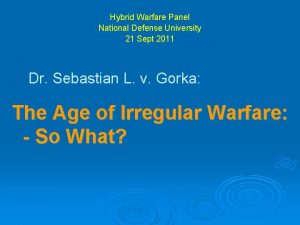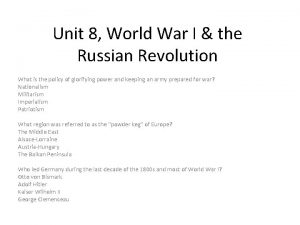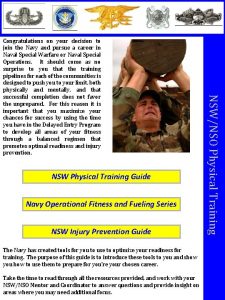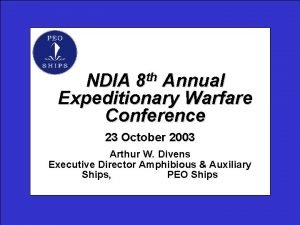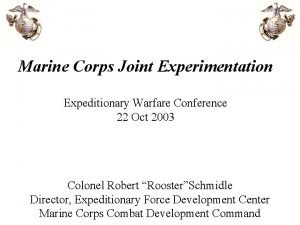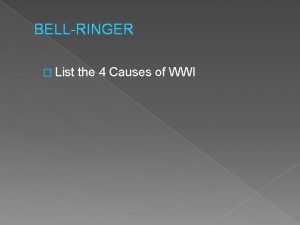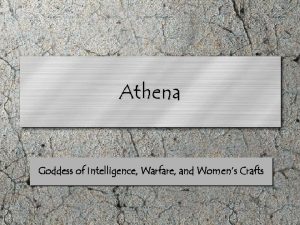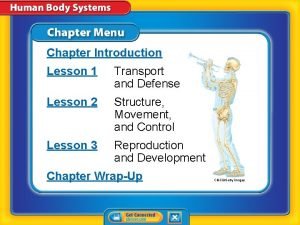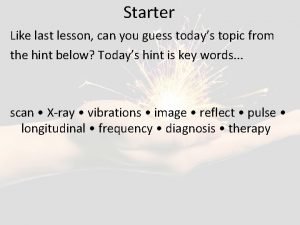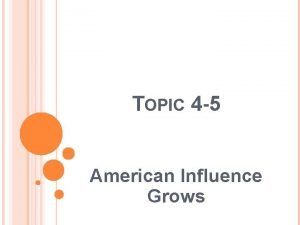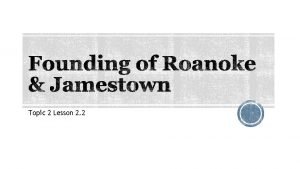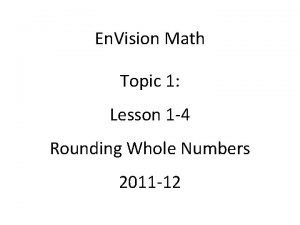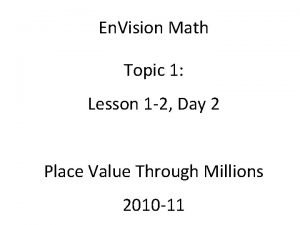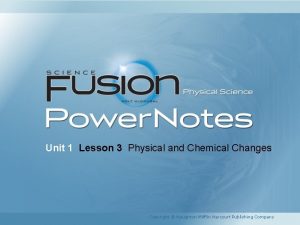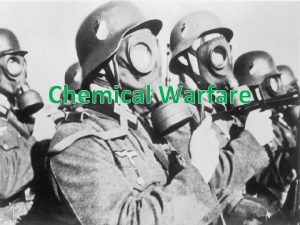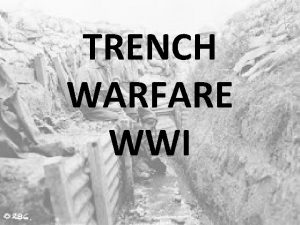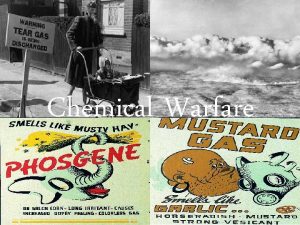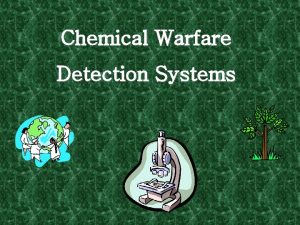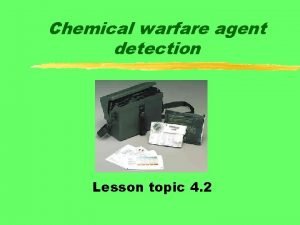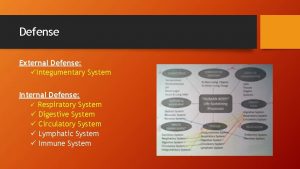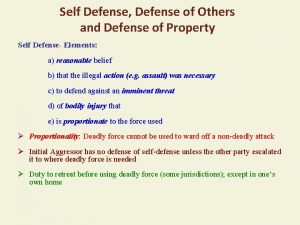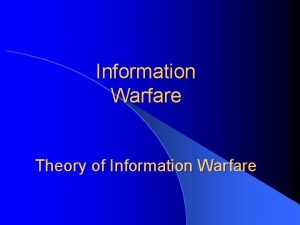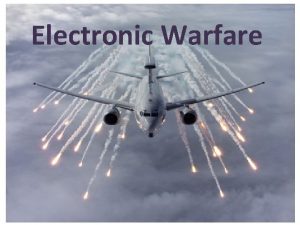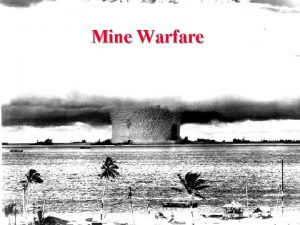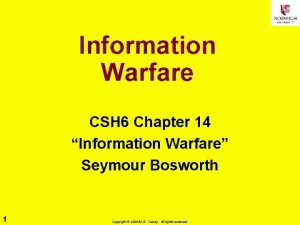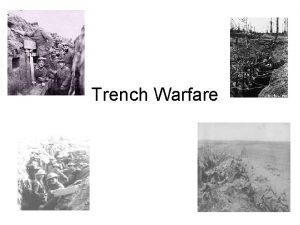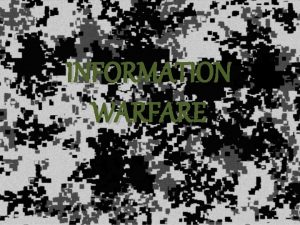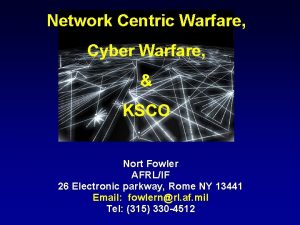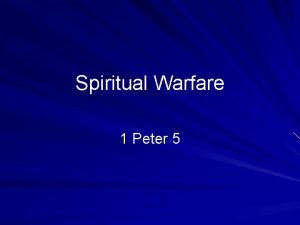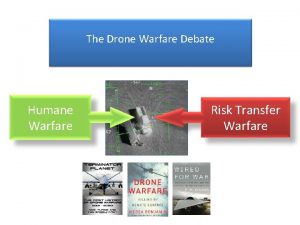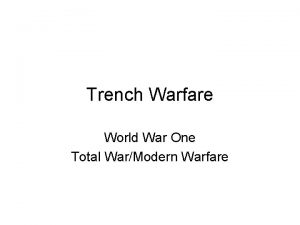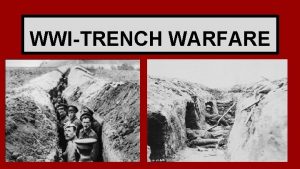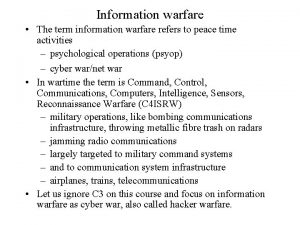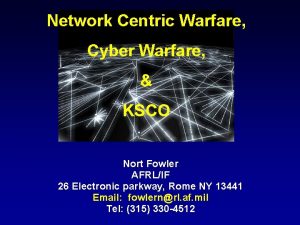Technical aspects of chemical warfare defense Lesson topic

























































- Slides: 57

Technical aspects of chemical warfare defense Lesson topic 4. 1

Enabling Objectives ¶ Perform buddy aid and self aid procedures · Select the treatments of chemical warfare agents ¸ Classify chemical agents by physical state, physiological action or tactical use ¹ Select the physiological symptoms of chemical warfare agents

Chemical Defense Terms, Classifications and definitions z. Hydrolysis y. Decomposition in water y. Formation of a new substance y. Changes/dilutes z. Detoxification y. Rate at which the body will counteract effects of a poisonous substance y. Exposure time y. Dose & concentration

Chemical Defense Terms, Classifications and definitions z. Persistence y. How long the agent is effective after used y. Physical properties y. Volatility, gas, solid or liquid z. Weather conditions y. Wind speed, heat, rain, etc.

Chemical Defense Terms, Classifications and definitions zdissemination y Explosive/nonexplosive munitions z. Percutaneous yenter through skin z. Non-percutaneous yrespiratory tract, ingestion, injure the eyes but not the skin

Chemical Defense Terms, Classifications and definitions z. Tactical use y. How agents are used against personnel z. Physical State ystored or disseminated z. Physiological action yphysical effect z. Cumulative y. Repeated exposures (additive effect)

Chemical Defense Terms, Classifications and definitions z. Casualty agents yagents cause death or severe injury z. Incapacitating agents yagents Produce temporary physiological and/or psychological effects z. Physical state y. Solid y. Liquid y. Gas or vapor

Chemical Agents z Nerve y. Tactical use x Casualty agent N Deadliest y. GA, GB, and GD: y. Agents for quick casualties y. VX: Agents for delayed casualties

Nerve z. Dispersed y. Artillery, mortar, rocket y. Aircraft spray y. Bombs/bomblets & missiles

Physical state z. GA y Colorless to light brown liquids z. GB y. Colorless liquids, no odor in pure state z. GD y. Colorless liquids, Fruity odor of camphor z. VX: y Amber colored oil

Persistency z. Disseminated in persistent & nonpersistent form z. G Agents, Liquid form 1 - 2 days z. V Agents, 1 - 2 weeks, persistent

Physiological actions z. General Physiological action y. Absorbed through any body surface y. Impacts entire nervous system y. Inhibits or blocks the action of cholinesterase y. Results in a build up of acetylcholine y. Must have an even balance of these two enzymes for the muscle system to function y. Death due to respiratory failure

Physiological actions z. Mild symptoms ypinpointed pupils/blurred vision y. Runny nose y. Salivation/drooling y. Difficulty in breathing y. Excessive sweating

Physiological Actions z. Severe symptoms y. Nausea & Vomiting y. Cramps y. Involuntary defecation & urination y. Twitching & jerking of muscles y. Headaches y. Strange/confused behavior y. Violent convulsions y. Cessation of breathing, death

Nerve agent z. Rate of action y. Rapid, death may occur within 15 minutes z. Rate of detoxification y. Slight, body can detoxify slowly y. Cumulative


Nerve agent Pretreatment z. Nerve Agent Pyridostigmine bromide Pretreatment Tablet (NAPP) y 21 tablets y 7 day supply y 1 tablet every 8 hours z. Protects enzyme in the body from nerve agents z. Antidote enhancer

NAPP z. If you miss a dose, it will not be made up N Do not take 2 tablets at once z. Start over, 1 tablet every 8 hours z. Taking more than 1 tablet at a time does not provide additional protection z. It may be more hazardous if there is exposure to a nerve agent

NAPP OVERDOSE SYMPTOMS z. Abdominal cramps z. Nausea z. Diarrhea z. Occasional skin rash z. Weakness z. Dimmed or blurred vision due to pinpointed pupils z. If any of the signs occur; consult medical personnel

Nerve agent antidotes z. Atropine auto injector y. Stored in cool, dry spaces y. Carried in mask carrier when issued y. Issued 3 auto injectors

Antropine Injector z. Characteristics y. Yellow end is safety cap y. Green body with yellow stripes y. Green end is injector end

Antropine Injector z. Administration y. Remove the yellow safety cap & press the green injector end into the outer thigh y. Hold for 10 seconds y. Place used Auto injector in front smock pocket

Administration

Nerve agent antidotes z 2 -Pam Chloride, (Enzyme reactivation) y. Gray ridged safety cap y. Black end is injector end y. Stored with atropine y 3 Auto injectors will be issued

2 PAM Chloride y. Remove gray ridged safety cap y. Press black injector end to the outer thigh y. Same area as the atropine injection y. Hold for 10 seconds y. Place used Auto injector in front smock pocket

CANA z. CANA (Convulsion Antidote for Nerve Agents) y 10 mg Diazepam y. Black end is injector end y. Gray safety cap y. Ridges of the CANA injector distinguish it from other injectors y 1 injector issued y Buddy aid only

2 PAM Chloride & Atropine auto injectors

Chemical Agents z. Blister agents y. Tactical use: casualty agent y. Causes incapacitation y. Death by infection y. Could supplement nerve agents

Blister z. Main groups y. Mustards (H) y. Lewiste (L) y. Phosgene oxime (CX) z. Dispersed by y. Artillery, mortar, rockets y. Aircraft spray y. Bombs/bomblets

Physical state z. Most found as liquids z. Colorless to dark-brown z. Oily droplets z. Extremely persistent

Physiological actions z. Effect the eyes, the lungs & form blisters on the skin z. Eyes are more vulnerable than the skin z. Breathing passages very vulnerable z. Initially irritates cells z. Produces cell poisoning due to infections z. Symptoms vary depending upon agent

Mustards: H (Levinstein) HD (Distilled), HN (Nitrogen) z. No immediate pain z. Redness of skin will appear at the exposed areas only z. Occurs 4 - 6 hours after contact z. Thin skinned & warm moist areas are very susceptible z. Concentration of agent & exposed are important factors

Mustards: H (Levinstein) HD (Distilled), HN (Nitrogen) z. Eye exposure causes severe inflammation or damage ytemporary or permanent z. Water filled blisters similar to burn blisters will appear within 1 - 2 days z. Healing time ranges from 3 - 8 weeks z. HD burns will heal more slowly

Mustards: H (Levinstein) HD (Distilled), HN (Nitrogen) z. Inhalation of mustard agents will damage the respiratory track which will then produce symptoms similar to those of choking agents (Discussed later).

Lewisite (L) z. Immediate pain upon contact z. Eye exposure will produce searing sensation z. EYES MUST BE DECONTAMINATED IMMEDIATELY (WITHIN 1 MIN), OR PERMANENT DAMAGE MAY OCCUR

Lewisite (L) z. Reddening of exposed skin areas will occur within 30 min z. Blisters will form in approximately 12 hours with skin burns much deeper z. If inhaled, injuries & symptoms similar to choking agents will occur z. Death may result within minutes

Phosgene Oxime (CX) z. Immediate pain on contact (bee sting) z. Irritation to eyes & nasal membranes z. Exposed skin bleaches in 30 seconds & will later be surrounded by a red ring/welt z. Bleached areas darken in 24 hours z. Scab formation occurs after 1 week z. Healing time, 2 months

Rate of action z. Little or no pain at the time of exposure with most blister agents z. Lewisite (L) & phosgene oxime (CX) cause immediate pain on contact z. All blister agents react almost immediately

MUSTARD AGENT

Rate of detoxification z. Extremely slow, Effects are cumulative z Self aid/Buddy aid y. Don mask & clothing y. Liquid contamination must be washed from the eye immediately y. After 2 minutes, treatment is of little use

Choking Agents z. Phosgene (CG) & Diphosgene (DP) y. Tactical use: Casualty agent NUsed extensively during WW-I accounted for 80% of all fatal chemical agent casualties y. Much less effective than nerve agents, but may be used for quick incapacitating effects

Phosgene (CG) z. Most dangerous member of the group z. Physical state y. Normally found as a colorless gas y. Odor, new mown hay, grass, or green corn

Physiological action z. Penetrates lungs causing them to fill with fluid z. Permanent lung damage z. Effects are confined to the lungs

Symptoms z. Uneasiness & fear z. Serious attacks of coughing producing large quantities of white/yellow or bloody frothy fluid z. Nausea, vomiting & gastric pain z. Breathing is quick, shallow & painful

Symptoms z. The pulse is fast and faint z. Shock followed by death through cardiac arrest or asphyxia z"Dry-land Drowning"

Choking Agents z. Rate of action y Immediate or delayed z. Rate of detoxification y Not detoxified; cumulative z. Self aid/Buddy aid y. Don protective mask

Blood Agents z. Tactical use: casualty agent y. High concentration to cause death y. Quick casualty effects y. Typical blood agents x. Hydrogen Cyanide (AC) x. Cyanogen Chloride (CK)

Physical state z. Colorless liquids z. Odor of bitter almonds z. May irritate the eyes & nose z. Extremely non-persistent

Physiological action z. Absorbed by the mucous membranes & skin z. Penetrates lungs without causing injury z. Follows the same route as the oxygenated blood until it reaches the cell tissues z. Inhibits the ability of the cell walls to retain oxygen z. Death due to respiratory failure

Symptoms z. Increased breathing rate z. Headaches, dizziness & giddiness z. Faster pulse rate & pounding of the heart z. Flushed skin & lips

Advanced symptoms z. Convulsions z. Coma z. Death z. Rate of action y. Immediate with death occurring from seconds to within fifteen minutes

Blood Agents z. Rate of detoxification y. Rapid, effects are non-cumulative z. Self aid/Buddy aid y. Don protective mask

Riot Control/Training Agents

Riot Control/Training Agents z. Temporarily irritating effects z. Two categories y. Vomiting y. Tearing

Vomiting compounds z(Adamsite (DM), DA, and DC) z. Violent uncontrollable sneezing, cough, nausea, vomiting, and a general feeling of body discomfort

Tear producing compounds (CS, CN) z. Large flow of tears & intense eye pain z. Training & in riot control, although CS may also be used in combat z. Warm, moist skin, especially face, neck, ears & body folds are susceptible to irritation

Summary and Review z. Terms & classifications z. Nerve zblister z. Blood z. Choking z. Riot Control, Training agents CBR
 Specific defense vs nonspecific defense
Specific defense vs nonspecific defense Quantitative chemistry grade 11
Quantitative chemistry grade 11 Clincher ideas
Clincher ideas Narrow
Narrow Sophisticated language
Sophisticated language Trench warfare propaganda
Trench warfare propaganda Joint warfare analysis center
Joint warfare analysis center Electronic warfare
Electronic warfare Ptsd spiritual warfare
Ptsd spiritual warfare Pros and cons of biological warfare
Pros and cons of biological warfare Selective service act of 1917
Selective service act of 1917 Ephesians weapons of warfare
Ephesians weapons of warfare The war to end all wars
The war to end all wars Why did soldiers build trenches
Why did soldiers build trenches Spear in spiritual warfare
Spear in spiritual warfare Ferris
Ferris Ww1 german allies
Ww1 german allies Undersea warfare conference
Undersea warfare conference Ancient warfare weapons
Ancient warfare weapons Olmec gods
Olmec gods Our warfare is not against flesh and blood
Our warfare is not against flesh and blood Define spiritual warfare
Define spiritual warfare Guerilla warfare
Guerilla warfare Naval surface warfare center
Naval surface warfare center Mayan warfare
Mayan warfare Naval surface warfare center
Naval surface warfare center Guerilla warfare
Guerilla warfare The three battlegrounds
The three battlegrounds Armor of god prayer
Armor of god prayer All warfare is based
All warfare is based German unrestricted submarine warfare
German unrestricted submarine warfare Quantum warfare
Quantum warfare Irregular warfare
Irregular warfare How did the treaty of versailles affect postwar germany?
How did the treaty of versailles affect postwar germany? Navy special warfare physical training guide
Navy special warfare physical training guide Ndia expeditionary warfare conference
Ndia expeditionary warfare conference Expeditionary warfare conference
Expeditionary warfare conference Why were military leaders baffled by trench warfare?
Why were military leaders baffled by trench warfare? Goddess of cleverness
Goddess of cleverness Adhd spiritual warfare
Adhd spiritual warfare Transport and defense lesson 1 answer key
Transport and defense lesson 1 answer key Section 2 reinforcement classifying chemical reactions
Section 2 reinforcement classifying chemical reactions Empirical formula and molecular formula pogil
Empirical formula and molecular formula pogil Section 2 classifying chemical reactions
Section 2 classifying chemical reactions Chemical reactions section 1 chemical changes
Chemical reactions section 1 chemical changes Chapter 7 review chemical formulas and chemical compounds
Chapter 7 review chemical formulas and chemical compounds Are kc and kp equal
Are kc and kp equal Guess the topic
Guess the topic American influence grows
American influence grows Topic 2 lesson 2-2
Topic 2 lesson 2-2 295 rounded to the nearest ten
295 rounded to the nearest ten Thematic statement examples for courage
Thematic statement examples for courage Topic 1 lesson 1-2
Topic 1 lesson 1-2 Technical writing lesson plans
Technical writing lesson plans Toxic reactions chemical equations worksheet answers
Toxic reactions chemical equations worksheet answers Lesson 3 physical and chemical changes answers
Lesson 3 physical and chemical changes answers Chemical properties and changes lesson 4
Chemical properties and changes lesson 4 Physical changes lesson 3 outline
Physical changes lesson 3 outline

